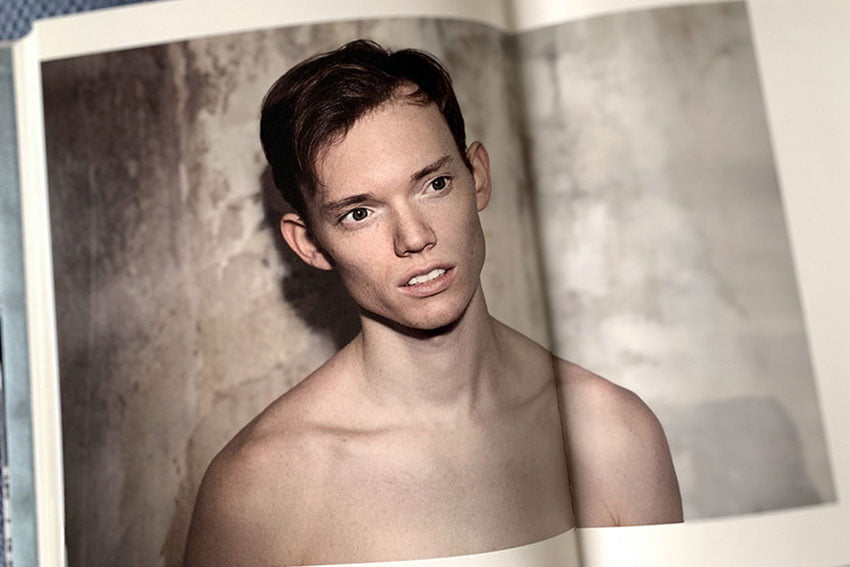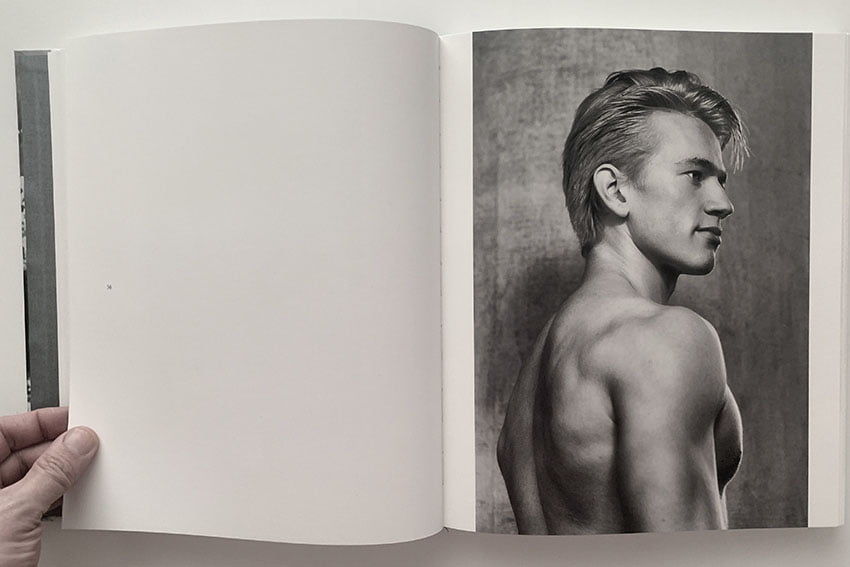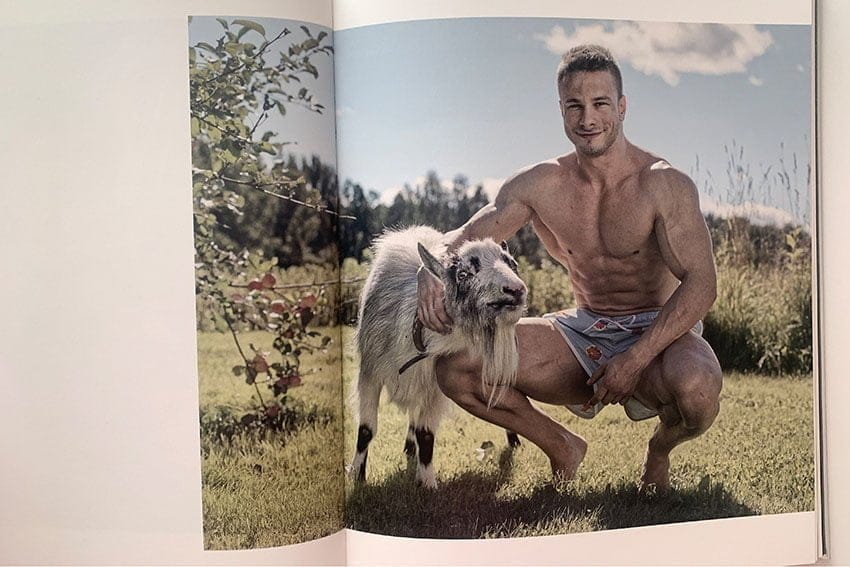
INTIMATE LIGHT (2022)
Photography: Tero Puha
Visual Design: Ville Karppanen
Contributors: Antti Kauppinen and Juhani Brander
Hardcover
Unilater Binding
152 pages
Size 24 x 29 cm
Finnish/English
Publisher: Parvs Publishing 2022
ISBN 978-952-7441-14-5
Best Finnish Art Book 2022 – Honorable Mention
Intimate Light – Photography Book was awarded an Honorable Mention at the national Art Book Days in Iittala on Saturday, June 10, 2023. Total of four art books received recognition in the Best Art Book 2022- competition. Below is the review of the jury:
On the cover of the glossy book, a young man walks in the water and looks intently into the camera. It is not a pose, but a real-looking snapshot that makes the viewer look at its details. This is exactly what photographer Tero Puha strives for. He doesn’t use professional models in his photos, because he wants to make his subjects forget the existence of the camera. In his pictures, Puha studies the behavior of light on male bodies.
The pictures in the work feature, among others, five men that Tero Puha has photographed at different times, 20 years ago and now. The oldest pictures are from 1994 and the newest from 2021. Many of the pictures are presented in the work as a series of two or three pictures, and the viewer can form a dialogue or a story in their mind.
The passage of time can be seen not only in the appearance of the models, but also in the development of the photographer, which increases the interest of the work. In his newer pictures, Puha focuses even more on the expressions, personality and small details of the subject, instead of bold shapes and sculpturalness.
He also bravely puts himself under scrutiny: At the end of the book, two self-portraits from 2002 and 2021 are shown.
The photos are printed on thick, matte glossy cardboard, which creates a luxurious feel to the work. The book, designed by graphic artist Ville Karppinen, also has a few literally skillful tricks that set it apart from many other photo books. The book’s cover and spine conveniently open to the side, and the bound part found inside is only attached to the back cover, which makes browsing the large book much easier. In addition, towards the end of the work, the reader will be delighted by the four-page-wide picture, which has been discreetly folded at the edges inside the work.
Tero Puha’s world of thought is presented at the beginning of the work in an interview with Antti Kauppinen, curator of the Helsinki Art Museum Ham. Among the pictures, there are also three poems by the poet Juhani Brander. They work well within the world of the photos. RIIKKA HAPPONEN
New Book from Tero Puha
The award-winning photographer and visual artist Tero Puha is known for his lens-based art and installations. Borrowing the idiom of Pop culture and consumerist aesthetics, Puha deals with topically relevant themes such as the problematics of body image and gender, as well as the body as a social construct.
Meanwhile, Puha is also an incurable idolizer of beauty. This book highlights a pick of his finest portraits from throughout his career. Some of the models are passing acquaintances, while others are closer companions, but all are portrayed with an equally exquisite sense of intimacy and achingly beautiful aesthetic sensibility.
Man at his most bare
Intimate Light is the award-winning photographer and visual artist Tero Puha’s new work. The cover of Intimate Light immediately reveals that it is not an ordinary photo book. Puha has been planning his work for a long time, and its photographs have been created in a period of almost thirty years, 1994–2021. The book contains an interview with curator and non-fiction author Antti Kauppinen about Puha. In it, Puha says that he wanted to create a holistic viewing experience where all elements support each other, right down to the feel of the paper.
Here he succeeds. The size of the book, high-quality binding and printing create a framework for a photographic work that gets under the viewer’s skin. Puha says that in the future he wants to focus more and more on the publication of themed photo books, because the books will remain after the photo exhibition ends.
Light and shadows caress the bodies of the naked men, while Puha’s camera draws their outlines and records the looks, expressions and movements of the subjects. Those photographed are not professional models, but a variety of ordinary men: young and old, athletic, sensitive and androgynous. However, they all have a strong charisma in common, which radiates from the pictures. Some of the models are people close to Puha, so it is also a kind of personal visual biography. Some of the people he has met only once, at the time of the shoot. He has not planned the shooting sessions very much in advance, they have arisen spontaneously. This can be seen in the relaxed, liberated atmosphere of the pictures. The subjects do not pose, but appear as themselves.
Initially convinced of the superiority of analog photography, Puha has later noticed that a digital camera often offers better options for different situations. The way Puha photographs has also changed over the years. In the earlier pictures, he stayed further away from his subjects, and the models appeared serious. Today, he has become bolder, and the rigid sculpture has changed to more personal portraits of the models with their gestures and expressions. The passage of time can also be seen in the pictures. He has photographed some of his models every fifteen years. These pairs of pictures on adjacent pages show the signs of time on the human body. Some of the black and white photographs resemble printmaking art with their controlled composition and aesthetics. The joy and playfulness radiating from other – often colored prints – show that the models have thrown themselves into the shooting project wholeheartedly.
A man is rarely an object, the object of attention, because usually that role belongs to women. The interviewer asks Puha, what kind of feedback have the pictures received in this sense? Puha hasn’t really thought about it. However, he states: “I’ve heard the weirdest comments from some of my gay friends, who for some reason assume that my photo shoots with men will culminate in sex”. However, this has not happened, as the shoots have been friendly and professional. And it’s not enough that the person being photographed is a beautiful man, and the light and composition essential to the photo are in order. The picture must also convey an emotional state. “Something inexplicable must be present,” Puha states. Then the pictures become art.
The work includes previously unpublished poems by author Juhani Brander . Beautiful hands of a beautiful person. / Let me hang them on the wall, hands. / Give the nights when the fingers come towards. The pictures of the emotionally strong work prove the old wisdom: one picture says more than a thousand words. Many of the models in the book look openly and confidently at the photographer – and at us viewers – as if to say: this is who I am, a human at its most bare. HANNELE SALMINEN Read the original article here.










